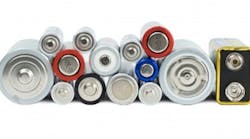This article was originally published as a sidebar in Industrial Networking's Q3 article called Alternate Energy Sources Are Increasing Important to Industrial Communication System Design.
Despite many advances being made in energy-harvesting technologies, we, as the team responsble for the installation and maintenance of these systems, must be aware that each of these options comes with issues that need consideration. These are some ideas to keep in mind when working with each of the technologies discussed in this article.
Batteries are governed by directive 2006/66/EC, the "battery directive" on batteries, acuumulators, waste batteries and accumulators, which regulates manufacture and disposal of batteries in the European Union, and puts the onus on manufacturers incorporating such devices in their products to provide cradle-to-grave support.
Photovoltalc systems need to consider not only the availability of light (winter versus summer, including incident angle), but also how covers such as dust or snow reduce the availability incident radiation energy.
Thermoelectric systems rely on the temperature difference between the hot and cold sides of the generator, so the design can't impede heat flux (release of heat). Or, as indicated, the number of nodes (not physically possible once installed) will have to increase to compensate for the reduced temperature driver.
Vibration systems require that the source of vibration driving the harvester must be present in natural frequency for the energy harvester, though the harvesters are desgined for a broad range.
RF power is limited by available frequencies, which need to consider what else might be affected in the frequency band used for transmission, as well as the maximum distance that can realistically exist between source and receiver. It'possible to use multiple sources or receivers to increase the range by adding up multiple sources.
However, there's also the risk of reflections in a facility's canyon-of-steel environment.

Leaders relevant to this article:



